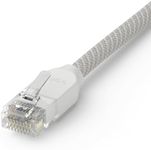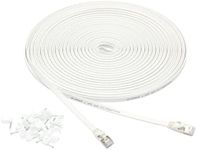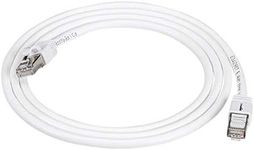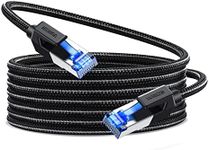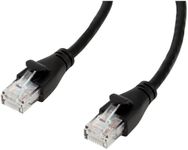Buying Guide for the Best Ethernet Cables
Choosing the right Ethernet cable can make a real difference in the speed and reliability of your wired internet connection. Ethernet cables come in several types and grades, and each is suitable for different needs, from simple web browsing to transferring large files or gaming. Before you buy, it's important to think about how you plan to use your network, the speeds you want to achieve, and the distance the cable needs to cover. Understanding a few key specifications will help you make a confident decision.Cable Category (Cat Rating)Ethernet cables are organized into categories, such as Cat5e, Cat6, Cat6a, and Cat7, and these determine the maximum speeds and performance each cable can handle. The higher the category number, the better the cable is at supporting faster speeds and higher bandwidth. For casual internet use like browsing and streaming, lower categories (like Cat5e or Cat6) are usually sufficient, but for high-speed needs such as gaming, video editing, or transferring large files, it’s better to choose higher categories like Cat6a or Cat7. To decide, think about the speed of your internet service and how much data you plan to move between devices—pick the cable that matches or exceeds what your setup can handle.
Cable LengthCable length is the physical distance the wire needs to cover between your devices and your router or switch. Longer cables can introduce a slight loss in speed and signal quality, especially with lower-category cables, but for most home uses, runs up to 100 meters won’t cause issues. Choose a cable that is long enough to reach between your devices with some slack, but avoid extra-long cables if they aren’t necessary, as excessive length can clutter your space and impact performance over very long distances.
Shielding (STP vs. UTP)Shielding helps protect Ethernet cables from electrical interference that can come from other electronic devices. Cables labeled STP (shielded twisted pair) have extra layers to block interference, while UTP (unshielded twisted pair) cables do not. If you’ll be running cables near lots of power cords or heavy electronics, or in a noisy environment (like a workshop), shielded cables can prevent network issues. In a normal home or office space where there’s little interference, unshielded cables are generally just fine.
Connector TypeMost Ethernet cables use the RJ-45 connector, which is a standard plug for networking gear. This makes them compatible with most computers, routers, and switches. There are occasional specialty connectors used for certain types of professional or industrial equipment, but for home and small business use, the standard RJ-45 is the way to go. Make sure the ends of your chosen cable match the ports on your devices.
Cable Jacket Rating (CM, CMR, CMP)The outer layer or jacket of an Ethernet cable may be rated for its resistance to fire and its suitability for different environments. CM is for general use, CMR is for running cables vertically between floors (riser), and CMP is for use in spaces with air circulation (plenum rated), like ceiling spaces. For most home setups, CM-rated cables are sufficient. If you’re installing cables behind walls, above ceilings, or in business buildings, consider higher-rated jackets to comply with safety standards and local codes.
